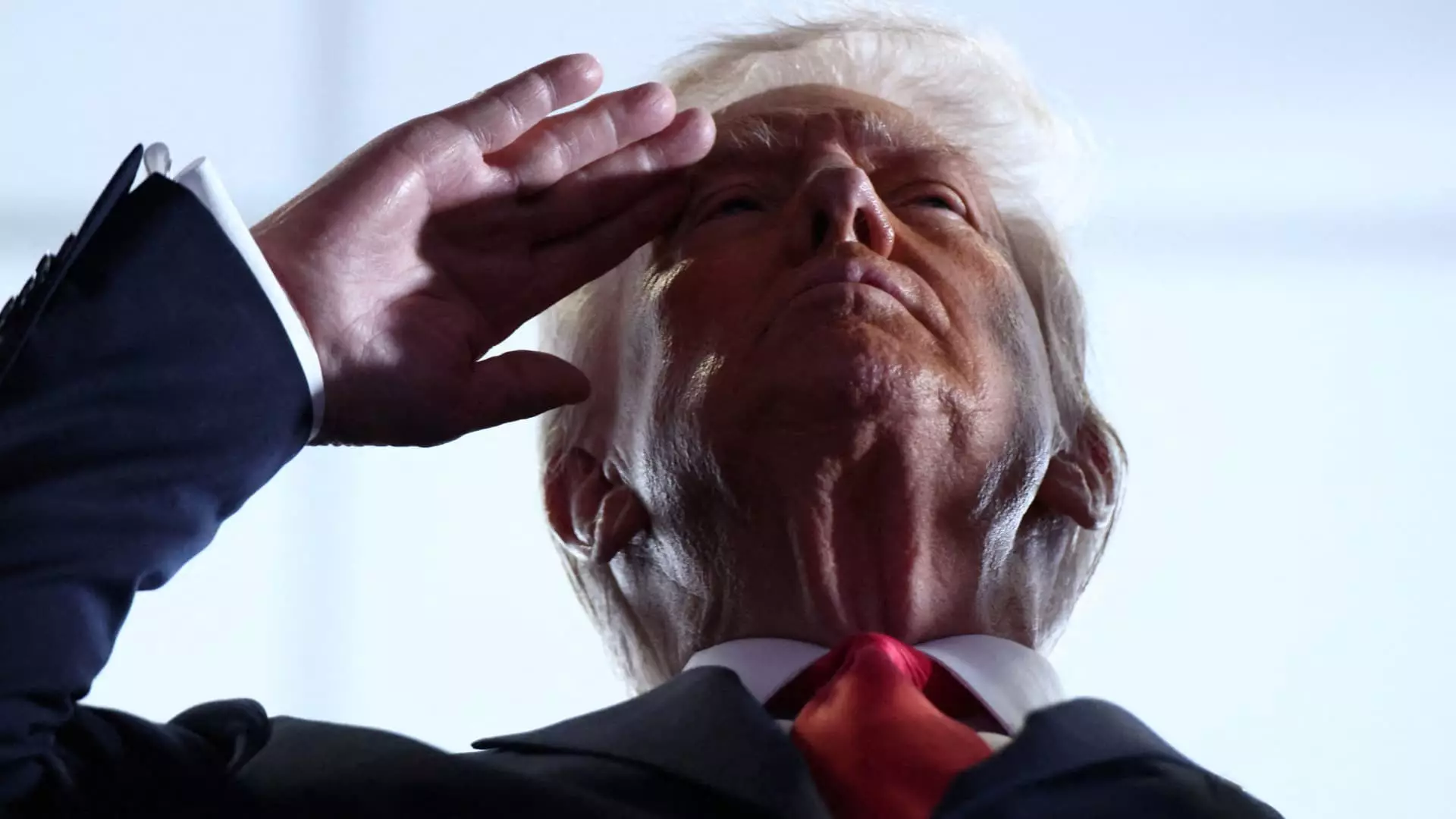Donald Trump’s second presidential term began on a notably high note, characterized by a surge in job approval despite the ongoing complexities of his policies and public sentiment. A recent CBS News/YouGov poll indicates that 53% of American adults express approval for Trump’s overall performance in office, which is a weighty indicator of support as he navigates the choppy waters of his second term. However, beneath the surface of these encouraging numbers lies a nuanced assessment of his policies, public perception, and the distinctions between approval and actual effectiveness.
The poll’s findings suggest a significant element of Trump’s public persona is resonating positively with the electorate. Descriptors such as “effective,” “focused,” and “energetic” highlight an image of robust leadership, which contrasts sharply with the 37% of respondents who labeled him as “compassionate.” This raises critical questions about the nature of political support; while voters may appreciate certain aspects of leadership, attributes that denote empathy and compassion seem to be less prominent in their evaluation of Trump.
The poll also reveals that a substantial 70% of participants feel Trump is adhering to the promises made during his 2024 campaign, showcasing a degree of belief in his consistency. Yet, this enthusiasm for his promises does not translate uniformly across the spectrum of issues important to voters. Many of the longstanding criticisms regarding his approach to key economic challenges, like inflation and trade, remain an area of discontent among the public.
Despite Trump enjoying a positive approval rating, economic realities present stark challenges. For instance, when asked about the impact of his policies on grocery prices, 51% of respondents believe that they will lead to increases rather than decreases. This sentiment illustrates a clear disconnect between the administration’s messaging and the public’s perceptions of tangible outcomes. Additionally, with 66% believing that the Trump administration does not dedicate enough resources to controlling inflation, it may signal an impending vulnerability that could jeopardize his support.
The implementation of tariffs on select countries, including Canada, Mexico, and China, has sparked mixed reactions. Although there is significant support for tariffs on China (56% approval), respondents voiced substantial opposition to tariffs imposed on Canada and Mexico. These divisive opinions underpin a complex narrative of economic policy that seems to blend both support for protective measures in some areas, with a stark disapproval for others.
Shifting focus to immigration, Trump’s strategies appear to find favor with a majority of the public. Notably, his push to deport undocumented immigrants has garnered a commendable 59% approval rating. Moreover, initiatives such as deploying U.S. troops to the southern border to deter illegal crossings received even higher support at 64%. These figures suggest that Trump’s hardline stance on immigration continues to resonate with a significant portion of the electorate, reflecting underlying concerns about border security.
Additionally, Trump’s foreign policy response to the Israel-Hamas conflict yielded a 54% approval rating, albeit with clear divisions along party lines. This division indicates that while his foreign policy maneuvers may achieve temporary boosts in approval, they are also contentious issues that provoke substantial dissent, particularly among Democratic and liberal groups.
Polled sentiments regarding the Department of Government Efficiency, a task force led by Elon Musk, reveal ambivalence among the public concerning the administration’s approach to streamlining federal bureaucracy. While there is a plurality favoring cuts to government spending and foreign aid, consensus remains elusive. This reflects broader concerns about the efficacy and implications of reducing government services, especially in the context of societal needs and public welfare.
As Trump presses on with his second term, the interplay between public perceptions of his effectiveness and the practical outcomes of his policies suggests that while he may have started on relatively solid ground, the path ahead is fraught with both promise and peril. Balancing a strong approval narrative with tangible policy success will be paramount for maintaining his political viability as challenges evolve. The coming months will undoubtedly test the resilience of voter support amidst a landscape defined by economic pressures and polarized opinions.



Leave a Reply